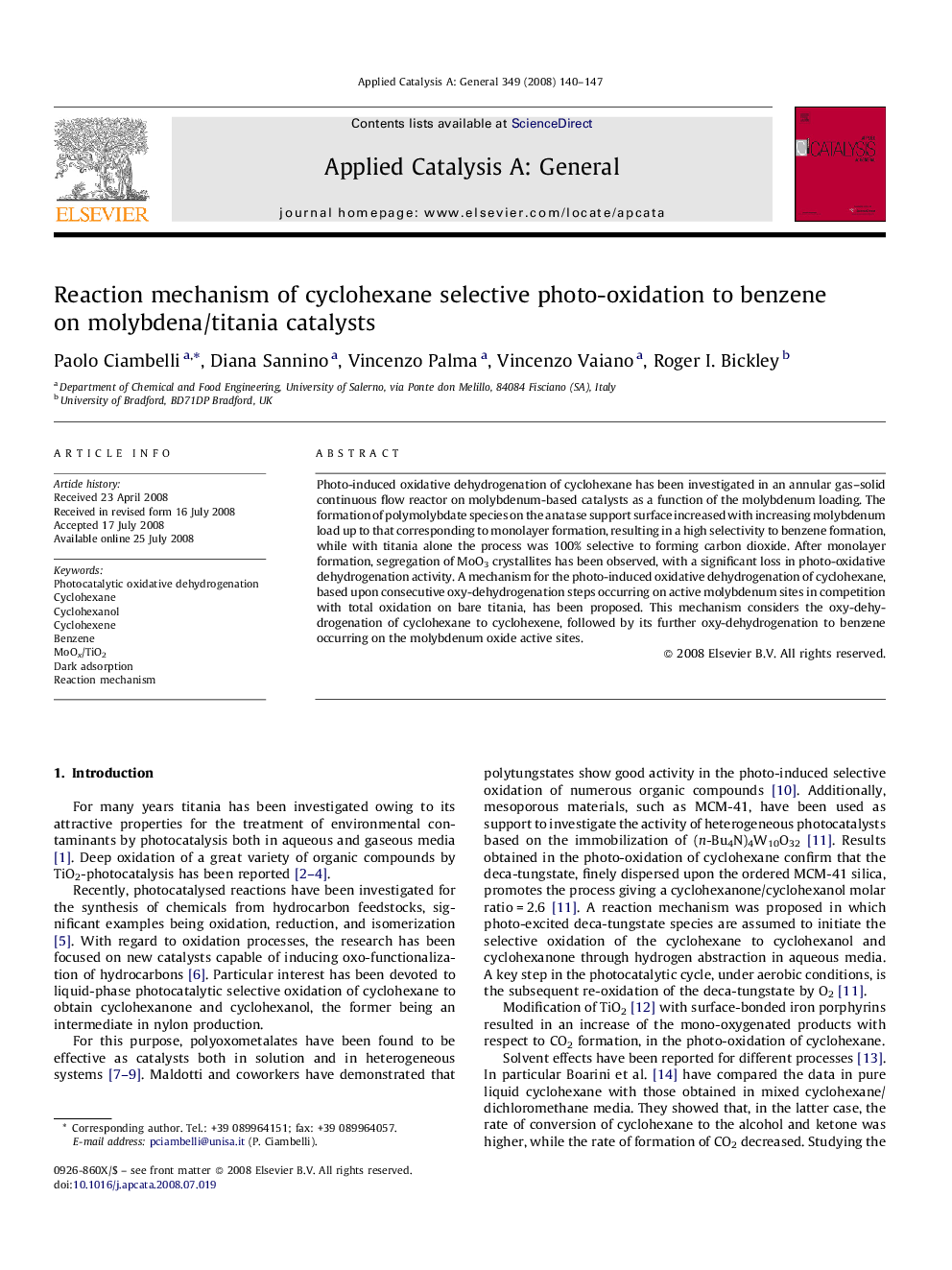| کد مقاله | کد نشریه | سال انتشار | مقاله انگلیسی | نسخه تمام متن |
|---|---|---|---|---|
| 42815 | 45942 | 2008 | 8 صفحه PDF | دانلود رایگان |

Photo-induced oxidative dehydrogenation of cyclohexane has been investigated in an annular gas–solid continuous flow reactor on molybdenum-based catalysts as a function of the molybdenum loading. The formation of polymolybdate species on the anatase support surface increased with increasing molybdenum load up to that corresponding to monolayer formation, resulting in a high selectivity to benzene formation, while with titania alone the process was 100% selective to forming carbon dioxide. After monolayer formation, segregation of MoO3 crystallites has been observed, with a significant loss in photo-oxidative dehydrogenation activity. A mechanism for the photo-induced oxidative dehydrogenation of cyclohexane, based upon consecutive oxy-dehydrogenation steps occurring on active molybdenum sites in competition with total oxidation on bare titania, has been proposed. This mechanism considers the oxy-dehydrogenation of cyclohexane to cyclohexene, followed by its further oxy-dehydrogenation to benzene occurring on the molybdenum oxide active sites.
Gas phase cyclohexane selective photo-oxidation has been investigated on MoOx/TiO2 catalysts. Polymolybdate species were responsible of the high selectivity to benzene, while on titania alone, only carbon dioxide was formed. A mechanism for the photo-oxidative dehydrogenation of cyclohexane, consisting of consecutive oxy-dehydrogenation steps on active molybdenum sites in competition with total oxidation on bare titania has been proposed.Figure optionsDownload as PowerPoint slide
Journal: Applied Catalysis A: General - Volume 349, Issues 1–2, 31 October 2008, Pages 140–147